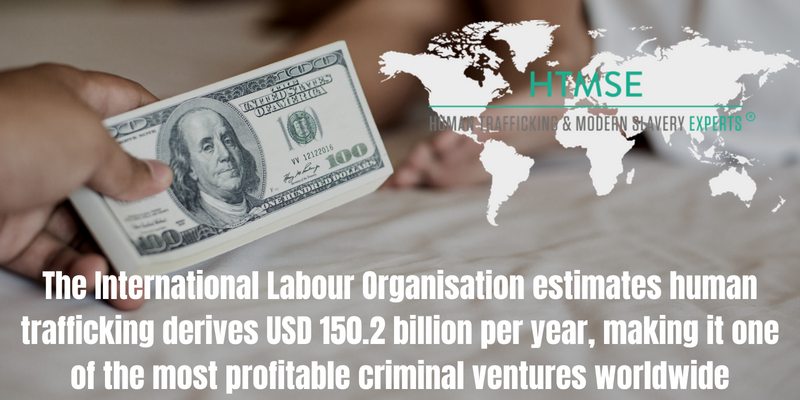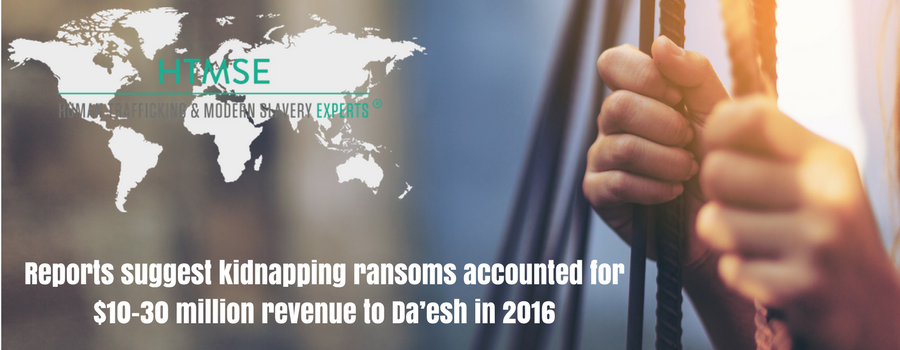
In parallel to the transatlantic slave trade as one of the most profitable business ventures in global history, modern slavery in the form of human trafficking follows suit. The International Labour Organisation estimates human trafficking derives USD 150.2 billion per year, making it still one of the most profitable criminal ventures worldwide. Furthermore, in an environment of globalisation it is rapidly increasing in numbers and in typologies. The rise in displacement and movement of people, whether in refuge from conflict zones, economic or environmental migration means there is increased vulnerability to trafficking, and in turn, more revenue produced by trafficking rings.
The Financial Action Task Force (FATF) and the Asia/Pacific Group on Money Laundering (APG) compiled a study Financial Flows From Human Trafficking to address the use of human trafficking as a source of money laundering and terrorist funding. Modern terror networks have indeed taken advantage of this profitable business venture, which creates a complex nexus between trafficking, money laundering and terror financing.
The report divides human trafficking into three categories in which revenue is produced through very unique money laundering systems. Firstly, trafficking for forced labour produces USD 51.2 billion per year, of which USD 43.40 billion is generated by hard labour exploitation, and USD 7.9 billion produced through domestic servitude. Second, trafficking for forced sexual exploitation produces USD 99 billion. Third, organ removal produces between USD 600 million – 1.2 billion, however the report refrains from providing a defined figure because the crime is rarely done in isolation, and therefore overlaps with other crimes which clouds the figures.
The aim of the FATF report is to provide “tangible indicators and best practices for national authorities to improve their effectiveness in combatting money laundering and terrorist financing from human trafficking”. In order to understand these systems appropriately, they provide a set of ‘money laundering indicators’ to be adopted by specialists and authorities working in the human trafficking sector, to create a systematic form of recording and analysing financial flows from trafficking. The report finds major issues that international actors have in disrupting the nexus between human trafficking, money laundering and terror financing, and outlines resolutions including the need to:
- Assess the diverse money laundering risks from human trafficking, share with stakeholders and ensure that they’re understood
- Leverage expertise, capabilities and information through partnerships between the public sector, private sector, civil society and NPO communities.
On analysis, the conclusions of this report put significant weight on the need for cooperation between international, state and regional authorities to work together in combatting financial flows from human trafficking. However, there are many challenges and complexities including the corruption of state actors that contribute to the global trafficking systems and obscure the financial figures recorded, including which revenue streams are being used for terror funding. The international institutions such as FATF need to work closely with governments to systematically identify and analyse this. By nature of the black market, accurate figures are impossible to find which inhibits the capacity of national authorities, financial institutions, NGOs and actors to prioritise responses to human trafficking in its various forms. Yet as we further understand the finances of the crime, we are able to respond with effective measures of prevention and resolution.
For the full FAFT report, Financial Flows From Human Trafficking read here.
